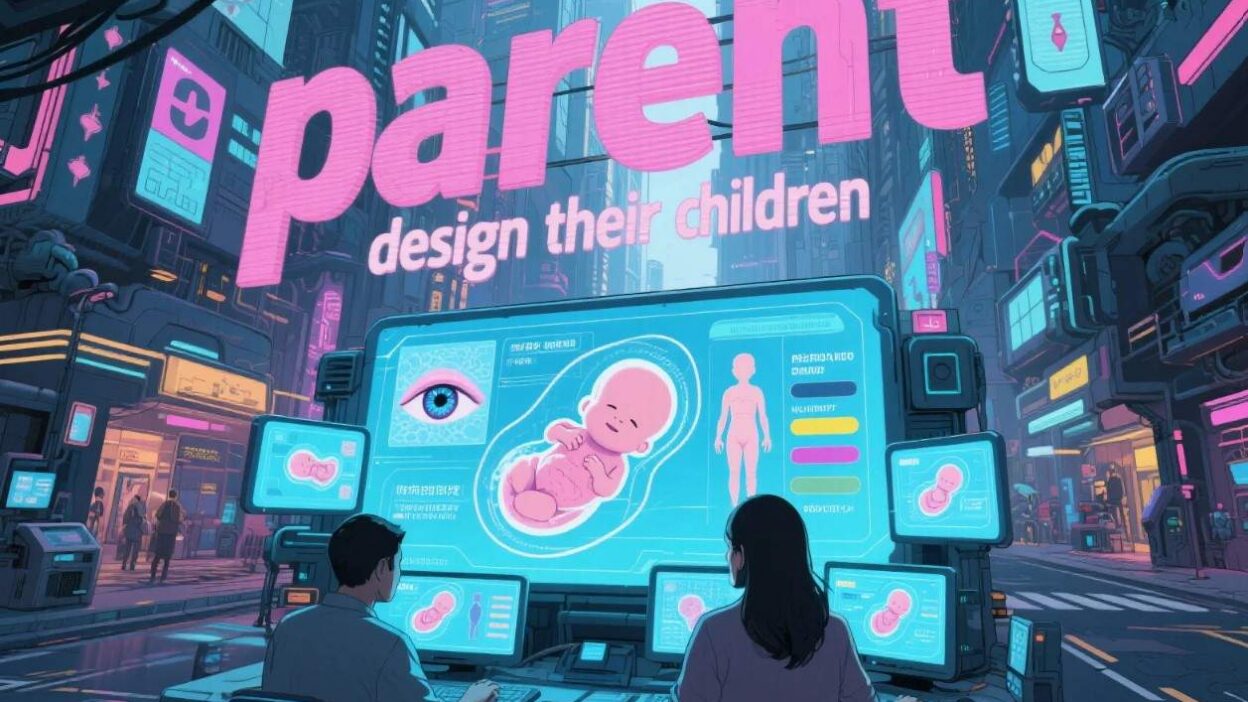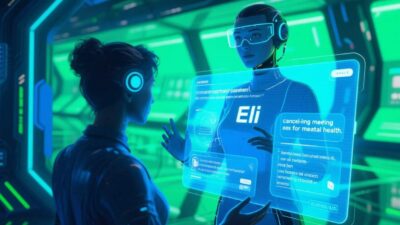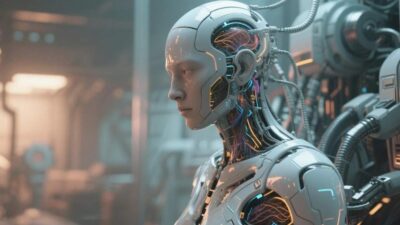The Line Between Hope and Hubris
Imagine a world where parents can “design” their children: selecting eye color, height, intelligence, or even predisposition to diseases—all before birth. This is no longer confined to science fiction; advances in CRISPR-Cas9 and gene editing technologies now make it possible to alter human DNA with unprecedented precision. Proponents hail this as a revolution in medicine, promising to eliminate genetic disorders and enhance human potential. Critics warn it could revive the horrors of eugenics, deepen inequality, and strip children of their right to an unscripted life.
Designer babies represent a tipping point in humanity’s relationship with technology: Do we use genetic tools to heal, or to “improve”? This debate cuts to the core of what it means to be human. Let’s explore the moral minefield of engineering the next generation.
Historical Context – From Eugenics to CRISPR
To understand the ethical stakes, we must confront history. The 20th century saw state-sponsored eugenics programs—most notoriously Nazi Germany’s “racial hygiene” laws and America’s forced sterilizations of disabled or marginalized groups—that aimed to “purify” humanity by eliminating “undesirable” traits. These programs were rooted in coercion, racism, and a warped vision of “perfection,” resulting in untold suffering.
Today’s gene editing differs in key ways: It’s voluntary, marketed as a tool for empowerment, and focused on therapy (curing disease) rather than elimination (erasing “inferior” groups). Yet the line between therapy and enhancement blurs. If we edit genes to prevent disease, why not enhance intelligence or athleticism? As bioethicist Julian Savulescu argues, “If we can make people better, we have a moral obligation to do so.” But critics like Françoise Baylis counter, “The road to hell is paved with good intentions—and eugenics never truly died; it just got a lab coat.”
The Promise – Healing and Enhancement
Proponents of designer babies emphasize transformative benefits:
Eliminating Genetic Diseases
CRISPR can correct mutations responsible for conditions like cystic fibrosis, sickle cell anemia, or Huntington’s disease. For families with a history of such disorders, this is a lifeline. In 2017, the first CRISPR-edited embryos were created to repair a gene linked to heart disease—a breakthrough that could prevent inherited suffering.
Enhancing Human Potential
Beyond medicine, gene editing could “upgrade” traits: boosting IQ, improving physical endurance, or reducing susceptibility to mental illness. Imagine a world where no child is born with Down syndrome, or where everyone has the cognitive tools to excel. Advocates argue this is the next step in human evolution—using science to transcend biological limits.
Reducing Healthcare Costs
Preventing genetic diseases early could save trillions in lifelong medical care. For instance, curing cystic fibrosis at the embryonic stage would eliminate the need for costly treatments, ventilators, and hospitalizations.
The Pitfalls – Eugenics, Inequality, and Commodification
Yet the promise of designer babies is shadowed by profound moral risks.
The Return of Eugenics – Coercion by Another Name
State-sponsored eugenics may be dead, but market-driven eugenics is alive and well. Wealthy parents could “buy” advantages for their children: selecting for height, intelligence, or even “attractiveness” (if genes for beauty are ever identified). This creates a genetic arms race, where privilege is cemented not by opportunity, but by DNA. As sociologist Ruha Benjamin warns, “Biotechnology could become the new caste system.”
Commodification of Children
Treating babies as “designer products” reduces them to a checklist of desired traits. Psychologist Alison Gopnik argues that children thrive when their uniqueness is celebrated, not engineered. If parents select for “high achievement” or “compliance,” they risk erasing the child’s authentic self—a form of emotional and existential harm.
Loss of Genetic Diversity
Humanity’s strength lies in our genetic diversity, which fuels resilience against diseases and environmental changes. Widespread editing could homogenize traits, making populations vulnerable to pandemics or climate shifts. Imagine a world where everyone is engineered for fair skin in a future with intense sunlight—suddenly, that “advantage” becomes a liability.
Unintended Consequences
Gene editing is not foolproof. Off-target edits (unintended DNA changes) could cause unforeseen health issues, from developmental delays to new diseases. Even “beneficial” edits might have trade-offs: Boosting intelligence could lower empathy, or enhancing immunity might reduce fertility.
Identity and Autonomy – The Child’s Right to an Unedited Genome
At the heart of the debate is a question of rights: Do children have a right to inherit their parents’ unaltered genes?
Philosopher Immanuel Kant argued that humans must never be treated as means to an end. Designer babies risk being created to fulfill parental desires—an act of instrumentalization. Bioethicist Rosemarie Garland-Thomson adds, “A child’s genome is not a canvas for parental self-expression; it’s the foundation of their autonomy.”
Imagine a child who discovers their parents edited their genes to eliminate “shyness,” but the edit backfired, causing anxiety. Or a child engineered for musical talent who resents never having the chance to choose a different path. These scenarios raise urgent questions about consent: Can a fetus or newborn consent to genetic modification?
Societal Impact – Redefining “Normal” and Eroding Compassion
Designer babies could reshape societal norms in dangerous ways:
Redefining Disability
Today, disability rights movements celebrate neurodiversity and physical uniqueness. If gene editing erases conditions like autism or deafness, society might devalue these identities, losing the richness they bring. As disability advocate Alice Wong notes, “Disability is not a problem to solve; it’s a part of human variation.”
Erosion of Compassion
If we engineer away suffering, do we lose our capacity to empathize? Philosopher Martha Nussbaum argues that vulnerability is central to what it means to be human. A world without struggle might also be a world without resilience, kindness, or connection.
Global Divide
Access to gene editing will likely be limited to the wealthy. In a world already stratified by income, this could deepen inequality: “Genetic haves” versus “genetic have-nots.” This echoes debates over education and healthcare—who gets to thrive, and who is left behind?
Regulation and the Path Forward – How Do We Proceed?
To harness gene editing’s potential without repeating history, we need robust ethical frameworks:
Therapy vs. Enhancement: A Clear Line
Regulations should permit editing to cure disease (therapy) but ban it for non-medical enhancement (e.g., selecting eye color). This aligns with the World Health Organization’s call to prioritize “health-related applications.”
Informed Consent and Transparency
Parents should be fully informed about risks, including off-target edits and long-term unknowns. For minors, a “cooling-off” period and independent oversight could prevent impulsive decisions.
Global Governance
International bodies like the UN must establish standards to prevent a “race to the bottom” in regulation. Bans on state-sponsored eugenics and corporate exploitation are critical.
Invest in Alternatives
Resources should flow into prenatal care, gene therapy for existing patients, and public health—not just into creating “perfect” babies.
Balancing Progress with Humanity
Designer babies represent a double-edged sword: a chance to heal and elevate humanity, or a tool to entrench inequality and dehumanize. The moral imperative is clear: Technology must serve people, not the other way around.
As we navigate this uncharted territory, let’s remember the words of geneticist Jennifer Doudna, a pioneer of CRISPR: “We have the power to change the course of human evolution. With that power comes the responsibility to ask: What kind of world do we want to live in?”
The answer lies not in banning innovation, but in guiding it with wisdom, compassion, and a commitment to equity. After all, the most beautiful thing about humanity is our diversity—and the courage to embrace it.
Join the conversation at AIDNESS. Should we regulate designer babies strictly, or allow limited use? Could enhancing human traits lead to a better world, or a more divided one? Share your thoughts—we’re all stakeholders in this future.
“The best way to predict the future is to create it.” – Peter Drucker



